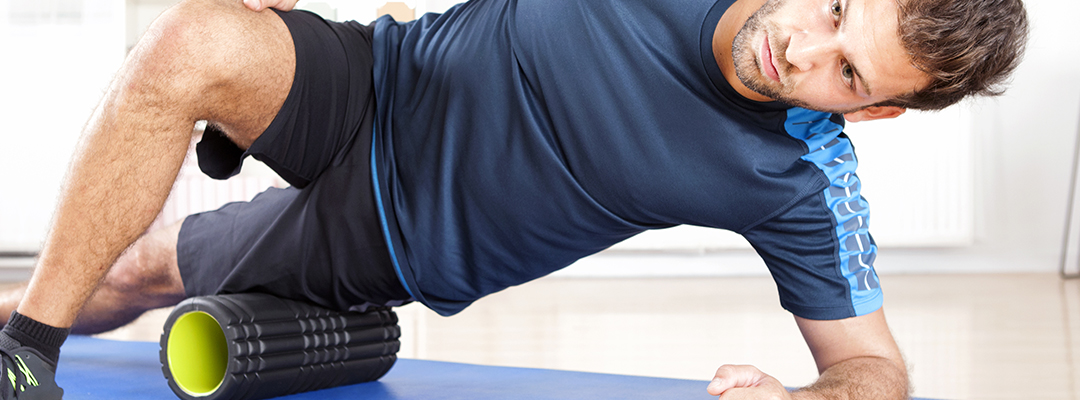
By: Mark Crabtree, MS, ATC, CSCS, FMSC
Published: July 2017
There is a well-known saying amongst health care providers working with runners. Runners are currently injured, just recovered from injury, or are about to be injured.
Why? Running is an advanced exercise. With every stride your body withstands somewhere between 4-8x your body weight. Running a mile is about 1500 steps. If you came into the gym and I suggested you hop on your right leg 750 times, then hop on your left leg 750 times you would probably give me a bemused look and walk back to your car thinking I was crazy. But if you came in and I suggested you start by running a mile you might consider that to be reasonable. Running a mile is essentially hopping from one leg to the other in alternating fashion. Running takes a toll on the body but there are things you can do to avoid forced rest.
Your muscles and joints need attention to perform at their best. What you do before and after the run may be as important as the run itself. Your muscle tissue benefits from soft tissue work- massage, foam rolling and a lacrosse ball can help with recovery while also preparing you for your run.
Most people aren’t on the fence with their opinion of foam rolling. Typically, you really like it or not at all. The roller provides feedback in the form of discomfort, which is the main reason people don’t like it.. When the roller feedback is pain it’s a signal from your body that it needs attention. The muscles are tight, maybe you have a knot or you are sore. The roller can help alleviate all the above.
There is some debate about how effective foam rolling is. Very few people I’ve worked with have ever gotten up off the roller and not felt better. So even if its benefits aren’t quite as magical as we would like, it still helps to keep you logging miles.
Foam rollers are relatively inexpensive, and they last if you get the right one. Typically, a good place to start is with a simple 3 foot long round roller. You may be tempted to get one with spikes, ridges or other poking devices- those all have their place for certain situations, but are not necessary right away. For about $20 you can get a dense one. Not extra dense, or rock hard. Just not too squishy. The squishy ones tend to wear out quickly.
Find a spot free of obstructions and put your roller on the ground. You can roll out just about any muscle that needs attention. Don’t roll on your neck, stomach, right on a joint, or anywhere too sensitive. Generally 5-10 rolls or 60 seconds is plenty of time. If you find a particularly sensitive spot you can spend a little more time and attention on it.
Have a seat in front of the roller and lie your back on it. Then pick up your hips and roll out your back. Go from your shoulders to your hips, but try and maintain a straight back. Stop before you get to your neck. You may feel some discomfort from the roller itself, but if you feel it in your low back push harder with your heels and engage your core a bit more.
Then sit on the roller and roll out your hips/glutes. Lean towards one hip and tuck your leg under the other. Look for a small sensitive area known as the piriformis. You will know you’ve found it when it does not feel so great. Gently work back and forth over the area trying to soften in up. Work both sides.
Next move to your hamstrings. Have the roller on the back of your legs with your hands holding you up behind you. Use your arms to roll form the hips to just above the knee. If rolling both legs at the same time isn’t enough resistance you can roll one leg at a time.
From there move to your IT Band. This one will not feel good but it will improve the more you practice. Set up with the roller on the outside of your leg. Supporting yourself with your arms. Try to roll from the hip to just above the knee. There will be spots where you question if it’s a good idea to continue. If the discomfort is too much you can take your top leg and put your foot on the floor to help remove some of the pressure. Try to get at least 5 rolls- more if you can. Work both sides. One may feel different than the other.
Flip to your stomach and roll out your quads. From the hips to above the knee. Control yourself with your arms.
Lastly you can roll your calves. Place the roller under your calves and support yourself with your arms. Work from just below the knee to foot.
Then stand up. How do you feel?
Better? Good.
Next get some stretching and movement prep and then hit the trail. For extra benefit roll when you get back and possibly the next day. The more frequently you roll the more you benefit.
Mark Crabtree is the Founder and President of Ignite Fitness Inc. Mark has been in the fitness business for more than 17 years. Mark is a Certified Athletic Trainer, Certified Strength and Conditioning Specialist, and Certified with the Functional Movement Screen. Mark Crabtree has been featured on WGN Morning News, CLTV, in the Chicago Tribune and Suburban Life Newspaper.
